Linguistic Landscape
Waldeck, Saskatchewan.
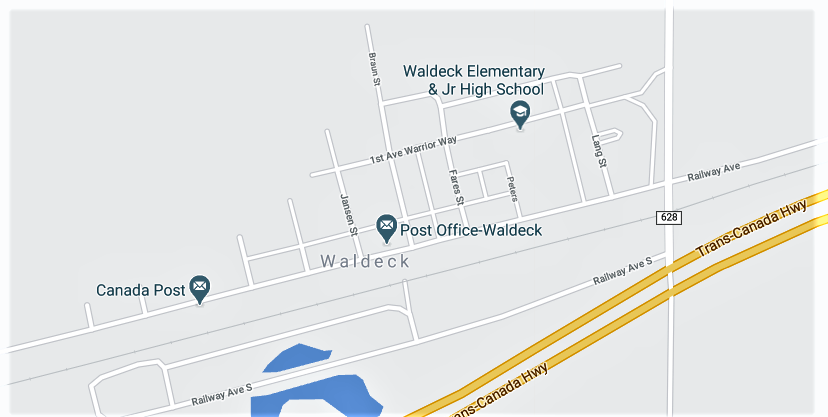
Section 1: Map & Written Description
The zone I personally have chosen for my linguistic landscape is the Village of Waldeck Saskatchewan. I was raised on as well as currently reside on a farm 3 kilometres North, with this being the closest town to me. I also chose this place because it is home to me. I went to school here for many years with this school being the major inspiration behind me working toward my Elementary Education Degree.
Geographically, Waldeck is located 14 kilometres East of Swift Current Saskatchewan, along the Trans-Canada Highway in the Rural Municipal of Excelsior #166. Waldeck became a village in 1913, as I remember celebrating 100 years of its existence in 2013. According to the 2016 Census, the total population in Waldeck was 277 residents. (Government of Canada, 2019). With it being such a small community, the potential for diversity among its citizens is drastically reduced. As stated in that same Census for 2016, the average age of its residents is 39 years old. (Government of Canada, 2019). Those who live in Waldeck must travel for their jobs. There are no businesses or services located in Waldeck with the exception of the post office who employs one individual, and Waldeck Elementary and Junior High School which includes grades of Kindergarten to Grade 9. The socioeconomic status of those who live in Waldeck are collectively as a group, middle class. Referencing that same Census, among those who live here the average income was $51,128.00 in 2015. (Government of Canada, 2019). Language is also something that does not have much diversity. The 2016 Census that has been referenced above states that every resident of Waldeck’s first official language was English as well as it was the most spoken at home. (Government of Canada, 2019) Overall, Waldeck is a great place for those who work in the city, but prefer a small-town feel.
The Swift Current Creek also runs just to the North of Waldeck. This is very relevant to what the area was like, and who resided here pre-contact. The following is a quote about the Swift Current Creek, “Before the permanent local settlement, First Nations People travelled the reaches of the creek in search of wild game. Bison, moose, elk, deer, antelope, bear, cougar, wolf, and smaller fur-bearing animals were found in abundance. Fish and waterfowl were also integral living parts of the Cypress Hills-Swift Current Creek landscape. First Nations camped along the banks of the creek because building materials, firewood, roots, berries, and wild game were readily available.” (History of Swift Current).
Section 2 : Photographs & Table
Throughout my picture taking of the languages, I could find in Waldeck, the only instance of any other language than English was on the post office sign and informational posters at the post office which was also in French. All signage including street signs, warning signs, and building titles were all in English.

Speed Limit & Weight Restriction Sign 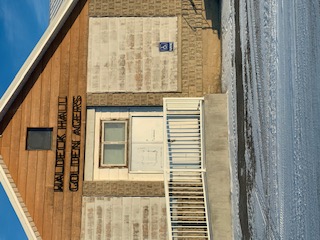
Waldeck Hall 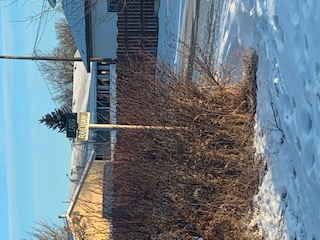
Lang & Railway Street Sign 
Caution Sign 
Real Estate Sign 
1st Ave Warrior Way Sign 
No Parking Sign 
School Billboard 
School Sign 
Playground Rules 
Fares Street Sign 
Warning Sign 
Pat Cochrane Memorial Park Sign 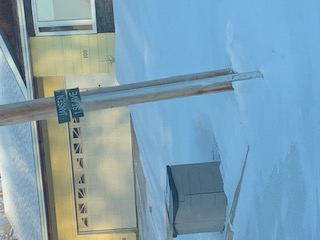
Jansen Street Sign 
Community Events & Leader Post and Booster 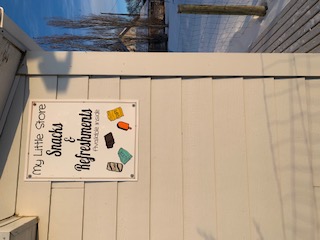
Store Sign 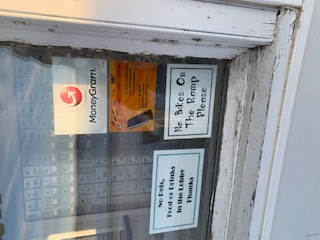
Post Office Rules 
Post Office Rules 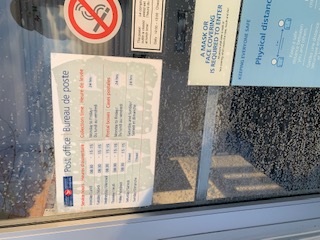
Post Office Hours 
Post Office 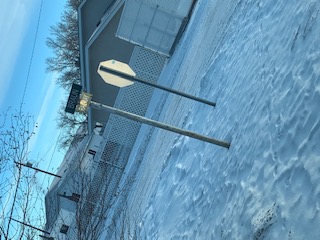
Braun Street Sign 
Waldeck Water Treatment Plant 
Real Estate Sign 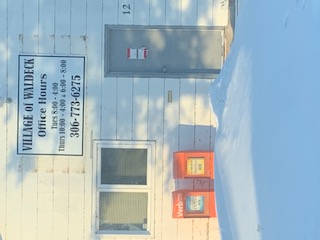
Village Office
Table Organization: My table is organized by the rows being the language found on the item and the columns being the collective group of what the pictures are of. If only one language was present, I entered it under that specific language. If there were more than one language present, such as English and French in this case, I entered it under the bilingual category. That way, I wasn’t entering one item multiple times in the table.
| X | School | Buildings | Posters | Street Signs | Other |
| English | – Waldeck School Sign – School Billboard | – Village Office – Waldeck Hall – Water Treatment Plant | – Community Events Posters – News Paper Boxes | – Speed Signs – Caution Signs – All Street Signs – No Parking Signs | – Real Estate Signs – Store Sign – Memorial Park Sign |
| French | None | None | None | None | None |
| Bilingual | None | – Post Office | – Post Office Informational Posters | None | None |
| Other | None | None | None | None | None |
Section 3: Analysis
The major goal for this assignment is to develop critical language awareness for your community. This isn’t something that I have personally thought about before I started this project in general. Having knowledge of the linguistic landscape for your community is a great asset to have. This is because it allows for perspective and insight into our knowledge about language and an overall, greater understanding of where you live and come from. Throughout the process of the picture taking I did of the languages in the community of Waldeck, I came to the conclusion that there isn’t much for language diversity here. Street signs, building signs, posters, all were in English. Though the community being as small as it is, it doesn’t leave much room for a diverse group of people anyways. Based on the pictures, the only language I would expect to hear in Waldeck would be English. This isn’t surprising to me, as I have lived in this community, and went to school here for 10 years, and the only instance of another language being spoken was the hour of French class we did in school. Though, because Waldeck is changing, I believe that if I heard another language spoken by a resident, it wouldn’t be a complete shock to me. Overall, as a whole, the pictures I took do represent my linguistic identity. This is because the only language that I am fluent in is English, so to see it throughout the community I am apart of is definitely reinforcing. This really makes me think about what it would be like for someone to move to a community that didn’t have any signage in their language whatsoever. There must be a lot of struggling among those people to figure out where they are going, what signs say, etc. especially in larger cities such as Regina and Saskatoon. I believe that the linguistic landscape of Waldeck is something that does shape me. This is because if I was to grow up in a different community, maybe one that is more culturally diverse in language I would be more knowledgeable about these different languages rather than knowing English, and English only.
I do believe that there is a connection between the languages in this community and colonialism. Before English was the dominant language in the area, it was inhabited by Indigenous Peoples who spoke Cree or Saulteaux. (Wolvengrey). These languages were displaced when Canada was colonized. Indigenous Peoples were forced on reserves, and there was a significant loss of culture including language throughout the residential school era. Through research on the Swift Current Creek, Indigenous Peoples camped along the creek, which runs just to the North of Waldeck. (History of Swift Current). These Indigenous languages spoke by these people, were the original languages of the area. What languages we see here today, is a result of colonization. English was brought here through migration, and is now the dominant language of the community and we see this through English on signage, posters, etc. I’m not real sure who has the power to determine what languages are on the signs. It’s something that I would assume that town council has the power over, but the signs have been the same way forever and I don’t suspect they would change anytime soon. Just because if English is the dominant language, there isn’t much reason to change it.
References
Government of Canada. (2019, August 9). Census Profile, 2016, Waldeck. Statistics Canada. https://www12.statcan.gc.ca/census-recensement/2016/dp-pd/prof/details/page.cfmLang=E&Geo1=CSD&Code1=4707022&Geo2=PR&Code2=47&SearchText=Waldeck&SearchType=Begins&SearchPR=01&B1=All&GeoLevel=PR&GeoCode=4707022&TABID=1&type=0.
History of Swift Current. City of Swift Current. http://www.swiftcurrent.ca/about-us/history-of-swift-current.
Wolvengrey, A. Indigenous Languages. Indigenous Saskatchewan Encyclopedia – University of Saskatchewan. https://teaching.usask.ca/indigenoussk/import/indigenous_languages.php.